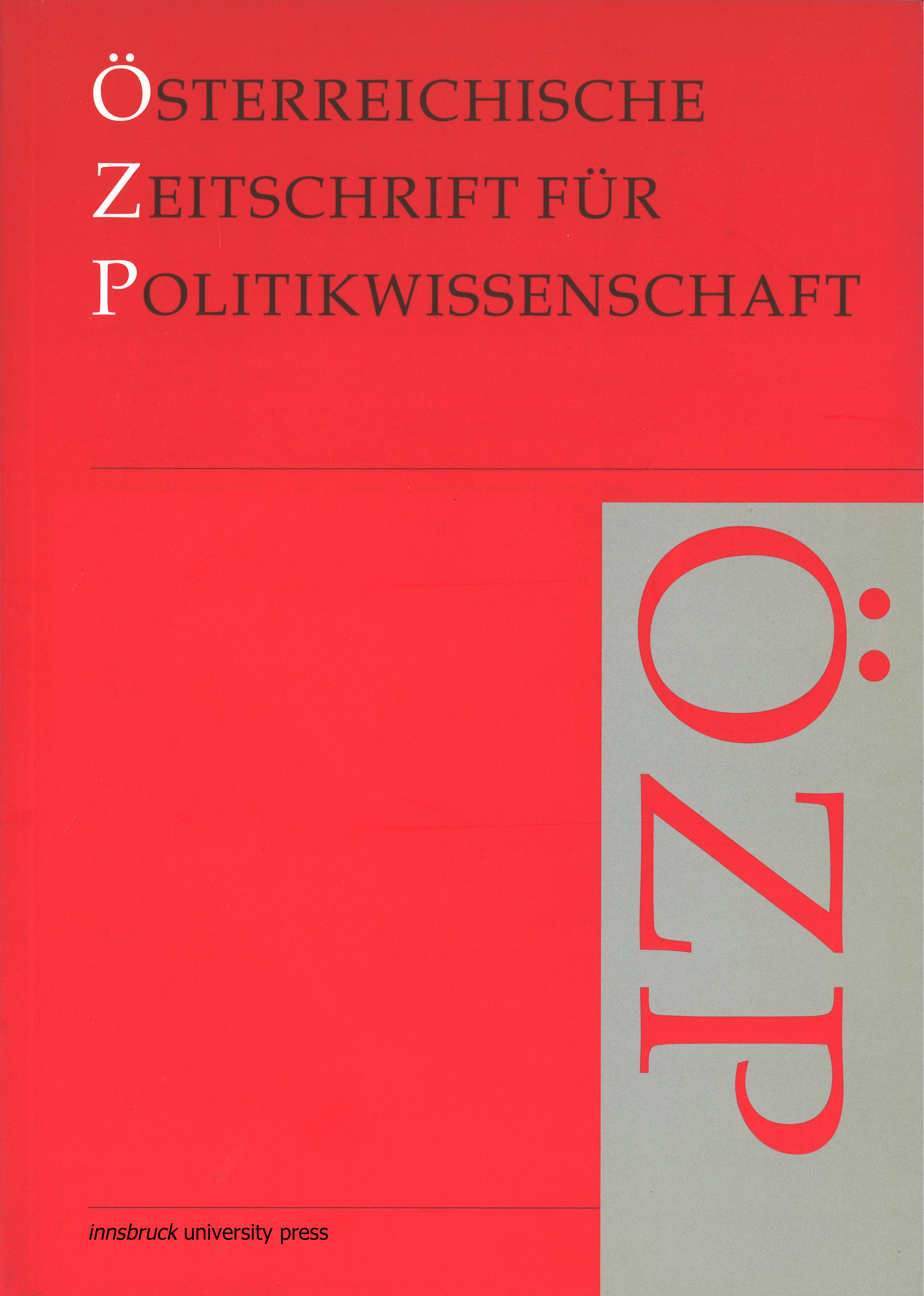Die Abtreibungsregime der OECD-Länder und ihre Bestimmungsfaktoren im Vergleich
DOI:
https://doi.org/10.15203/ozp.810.vol31iss3Abstract
Der Abbruch einer Schwangerschaft gehört weltweit zu den leidenschaftlich diskutierten Themen der Gegenwart. Verfechter moralischer, politischer und juristischer Argumente stoßen in den Kontroversen aufeinander und prägen je nach ihrem Einflussbereich die Regulierung der Schwangerschaftsunterbrechung in den Staaten mit. Die unterschiedliche Gewichtung der einzelnen Argumente in den jeweiligen Ländern hat eine international differierende Rechtsvielfalt zufolge: Sie reicht vom generellen Verbot über das Modell einer stark eingeschränkten bis hin zu einer völlig liberalen Regelung.
Die forschungsleitenden Fragestellungen der vorliegenden Arbeit fokussieren auf die Bestimmungsfaktoren der staatlichen Gesetzgebung zum Schwangerschaftsabbruch in 22 OECD-Demokratien. Dabei greift die Untersuchung auf die Theorieschulen der international vergleichenden Staatstätigkeitsforschung zurück. Der OECD-Vergleich enthüllt, dass in ganz besonderem Maße politische Parteien die Ausgestaltung des nationalen Abtreibungsrechts determinieren. In einzelnen Ländern beeinflussen ferner Institutionen die politische Regulierung der Schwangerschaftsunterbrechung.
Downloads
Issue
Section
License
The OZP is the authorized quarterly publication of the Österreichische Gesellschaft für Politikwissenschaft (ÖGPW, Austrian Political Science Association)
The author of an article (in case of multiple authors: the corresponding author, responsible for releasing this material on behalf of any and all co-authors) accepted to be published in the OZP hereby acknowledges the following Copyright Notice:
- The author retains the copyright to the article.
- It is the responsibility of the author, not of the OZP, to obtain permission to use any previously published and/or copyrighted material.
- Publication of a submitted text is dependent on positive results from the peer reviewing. In such a case, the OZP editors have the right to publish the text.
- In case of publication, the article will be assigned a DOI (digital object identifier) number.
- The author agrees to abide by an open access Creative Commons Attribution (CC BY nc) license. The license permits any user to download, print out, extract, reuse, archive, and distribute the article in any non-commercial way, so long as appropriate credit is given to the author and source of the work.
- The license ensures that the author’s article will be available as widely as possible and that the article can be included in any scientific archive. In order to facilitate distribution, the author agrees that the article, once published, will be submitted to various abstracting, indexing and archiving services as selected by the OZP.
- In addition, the author is encouraged to self-archive the article, once published, with reference to the place of the first publication.
- After the contribution appears in the OZP, it is still possible to publish it elsewhere with reference to the place of the first publication.
- The finished article, if published, will include a correspondence address (both postal and email) of the author.
- If written under the auspices of a grant from one or more funding agencies, such as FWF (Austrian Science Fund), ERC (European Research Council), and Horizon 2020 (EU Framework Programme), an article accepted for publication has to be deposited in an Open Access archive. The OZP’s archiving policy is compliant with these provisions. (In case the article derives on funding from a different source, the author is responsible to check compliance of provisions.)




